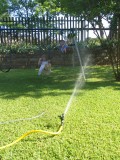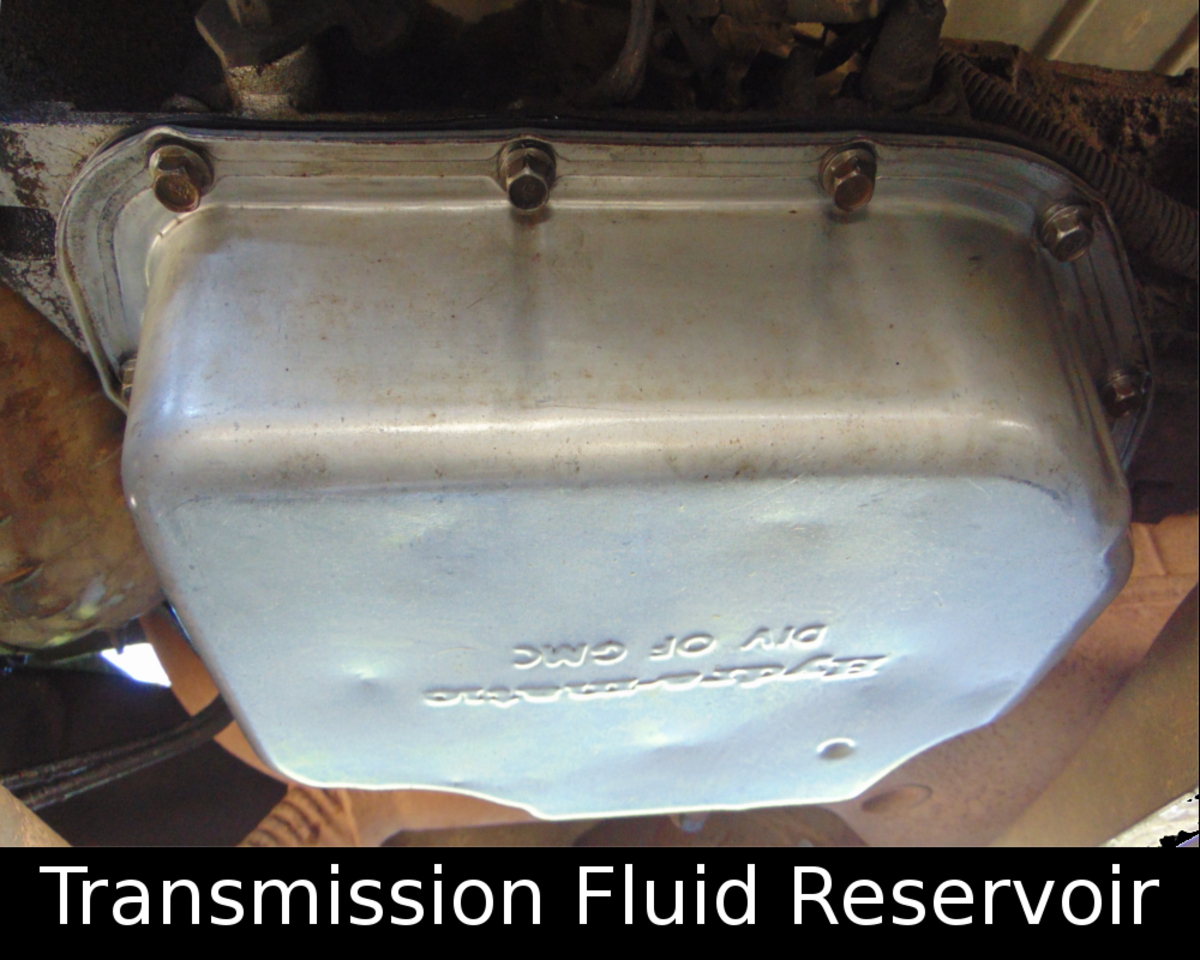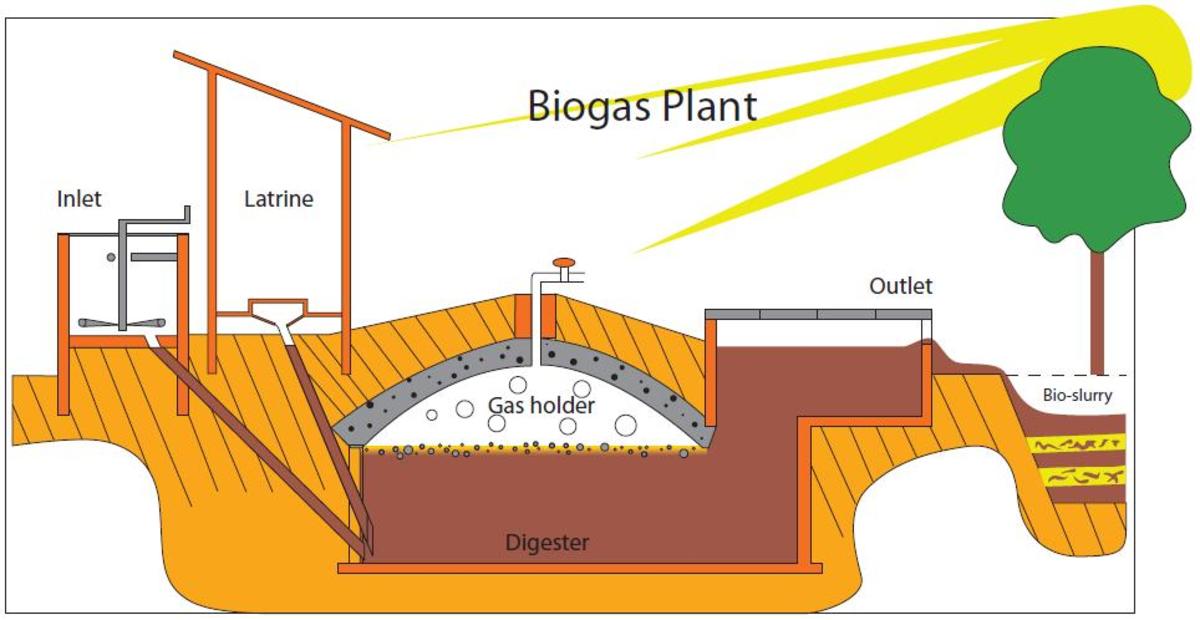Rainwater Syphoning To Transfer Containers
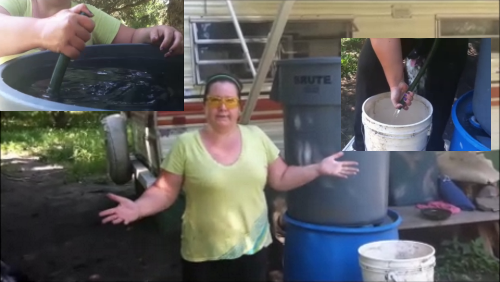
What Is Syphoning?
Syphoning is a great technique to learn that involves the transfer of fluids such a rainwater through a hose by applied physics or gravity feed. According to Newton's Laws of Motion - the first law being the law of inertia states that "an object in motion will continue in motion until some force interrupts its path." Therefore, the syphoning technique utilizes this first law of Newton's when fluid is being pulled through a hose by gravity from one container into another container set at a lower elevation.
Simply put in layman terms Newton's first law is explained like this: If you completely submerge a hose in a reservoir of fluid totally displacing all of the air in the hose with the fluid that is in the reservoir and then draw only one end of the hose out of the container to a lower elevation than the fluid level in the container, the weight of the fluid running out of the hose will draw extra fluid with it out of the reservoir. Thus, fluid will continue flowing through the hose from the reservoir until something interrupts the flow. So the fluid is pulled out of the elevated container by the weight of the fluid flowing by gravity out of the hose. If the hose cannot be totally submerged in the elevated reservoir to displace the air that is within the hose then creating a slight vacuum at the lowered end of the exposed section of hose to begin the initial draw of fluid will create a the same syphoning effect. A vacuum can be created by a simple sucking action much like sucking fluid from a drink container through a straw.
How To Siphon Rainwater
The Tools To Siphon
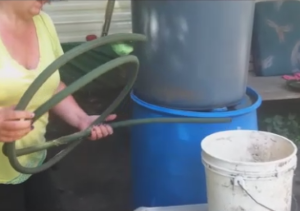
What You Will Need To Siphon
Because gravity is necessary when syphoning any fluid you will need to be certain that you will be able to position the exposed end of the syphoning hose below the upper fluid level of the reservoir that you are syphoning from. As the fluid level drops in the reservoir the exposed end of the syphoning hose will need to be lowered to continuously maintain an elevation below the reservoir fluid level. After you have discovered where you can position the exposed end of the syphoning hose to keep it below the reservoir fluid level you can set a second container at that location. Now once you have your storage reservoir and your rubber syphoning hose and a catch container you have everything you will need to begin to siphon the rainwater.
Why Rubber Hose?
There are many styles of hose made from different compounds and most hose compositions serve a specific purpose very well. But when it comes to utilizing the syphoning technique a soft and malleable hose composition is much more flexible to work with. Plastic style hoses are too rigid to lay securely in the position that you desire to set them for optimum syphoning performance. A soft rubber hose will lay and stay in the position where you locate it. To optimise syphoning performance ideally the submerged end of the syphoning hose should lay at the very bottom of the storage reservoir.
The Syphoning Technique

The Syphoning Technique
After you have your rubber hose and a catch container positioned beside the reservoir at an elevation lower than the fluid level of the storage reservoir take the hose and totally submerge it in the rainwater inside the reservoir. Let the one end of the rubber hose fall to the bottom of the reservoir while holding the other end of the rubber hose in your hand submerged under the water. You will notice air bubbles rising from the end of the hose in your hand as the air in the hose is displaced by the rainwater. Allow all the air in the hose to be displaced by the water. Once water appears in the end of the hose that is in your hand the air has been replaced by the water so tightly cap the end of the hose with your thumb, allowing no air to enter the hose while you pull the end of the hose out of the reservoir and position it in the lower catch container.
Catch Container
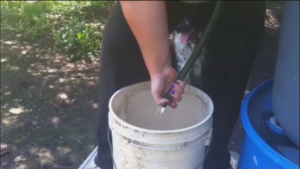
Plastic Pails
Pulling the capped end of the hose out of the rainwater reservoir while keeping your thumb pressed tightly over the end of the hose position the rubber hose in the catch container and release your thumb. The rain water should flow freely out of the hose. If the water only drains from the inverted section of hose and then stops flowing, repeat the syphoning process. Re-submerge the rubber hose completely in the water inside the reservoir and cap the end of the hose tightly again and pull the hose up out of the reservoir and down into the catch container once more - the water should flow freely.
Water should Flow Freely
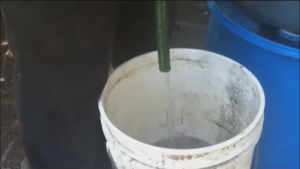
Small Water Transfer Pump
Why Not Use A Pump?
If the catch container is able to be set well below the fluid level in the rain water reservoir the syphoning action should cause the water to flow from the exposed end of the rubber hose with good force. The diameter of the rubber hose will of course affect the volume of water flowing, but will not affect the force of the water flowing. If you desire quicker water flow, use a larger diameter hose and if you desire extra force, if it is possible, lower the catch container further below the level of fluid in the storage reservoir. There is absolutely no need for a pump if the syphoning setup is optimised because the syphoning action when functioning properly will perform as well as any small pump. When only transferring water from the reservoir into a local catch container set in the immediate location the syphoning action is very efficient. But if the catch container is some distance from the storage reservoir the force of the water flow from the extended syphoning hose will be reduced. You can siphon fluid through a very long hose, but the longer the hose the slower the flow will become. If you are unable to set up the rain water reservoir in a position where the catch container can be set well below the fluid level of the reservoir or some distance away from the reservoir than a small pump may be necessary for your application.

Questions or Comments?
I welcome all your questions and comments as well as any suggestions or ideas of your own. Please contact me through any of my links with any input that you desire to contribute. I enjoy hearing from everyone.
Thank you
How To Pam




